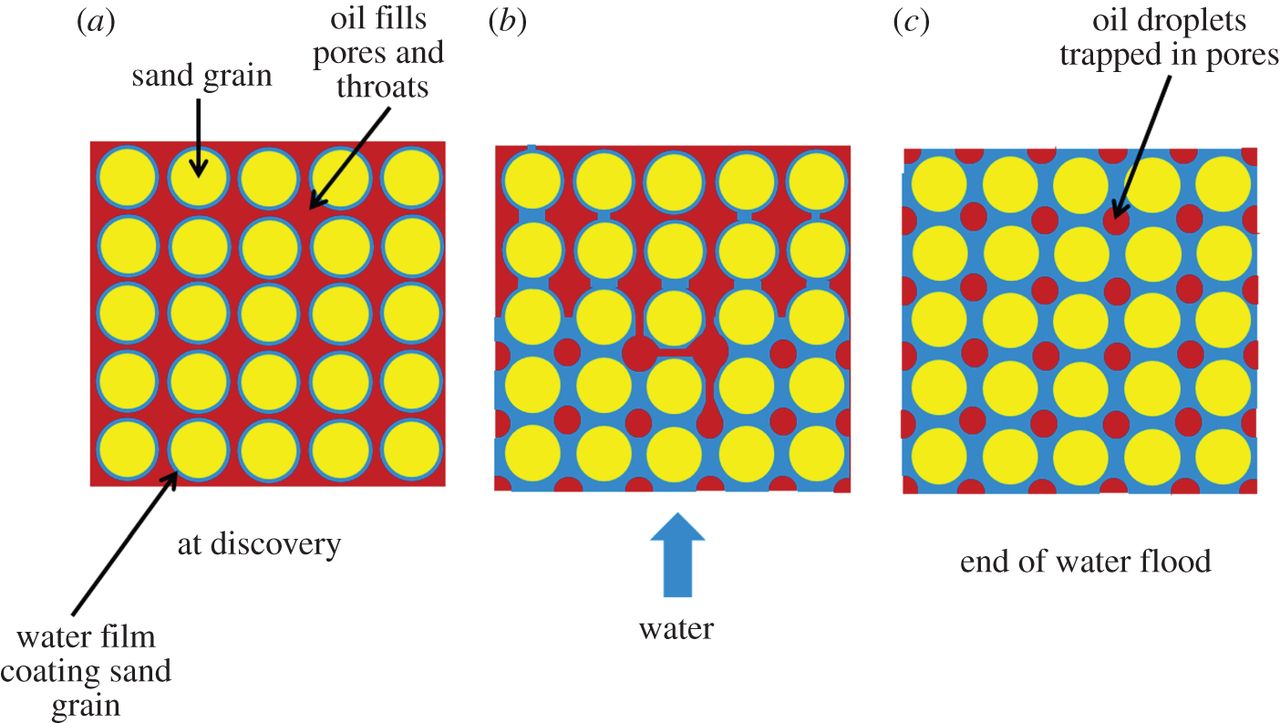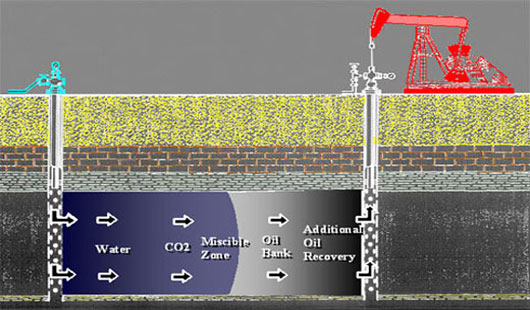Miscible gas injection differs from basic gas
injection in that the components of the produced gas are altered
to allow the gas to combine with the residual oil in a
reservoir. The gases typically used in miscible gas injection
are CO2, nitrogen, and hydrocarbon gases such as propane and
butane. The miscibility of a gas with oil depends on the
temperature and pressure of its environment. Gas must be dense
enough for it to be soluble with oil, so the high pressure of
oil reservoirs is ideal for this recovery technique.
Miscible gas injection affects a factor of recovery called pore
scale displacement, which means how much oil in a pore is
produced. When a reservoir has been through waterflooding, the
oil in the pores may lose flow continuity and become trapped in
water.
 http://rsta.royalsocietypublishing.org/content/372/2006/20120320
http://rsta.royalsocietypublishing.org/content/372/2006/20120320
Since oil is not miscible in water and water has developed
a flow path, further water flooding will cause water to flow
past the oil and the reservoir will produce the injected water.
So, in miscible gas injection, The injected gas enters the pores
and begins to mix with the oil until there is one substance in
the affected part of the reservoir. Since oil is no longer
trapped in the pore, but rather dispersed through the gas, the
oil can move with the gas in a continuous flow towards the well.
 http://www.co2.no/default.asp?uid=53&CID=24
http://www.co2.no/default.asp?uid=53&CID=24

